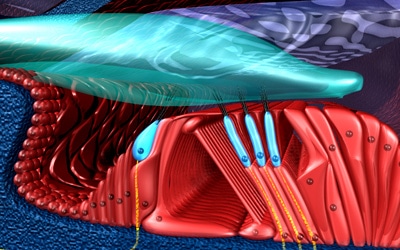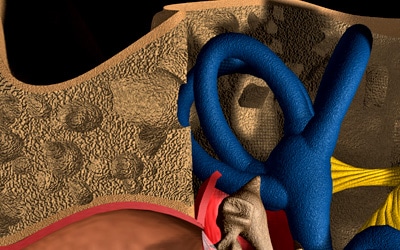In the semicircular canals of our vestibular system (organ of balance) the respective position of our head and body is also transmitted by a fluid system to the sensory cells within this very organ. As in the cochlea this is achieved by way of so-called cilia movements. Within the cell itself almost the exact same ATP-consuming processes which take place during the hearing process in the cochlea are carried out: the mechanically received stimulus (cilia movements in the jelly crest) is transformed into an electrophysiological nerval pulse that can be passed on into the central nervous system.
As in the case of the auditory cells, the lack of cellular energy also actuates a damaging process within the affected organ. If, due to continuous overstrain, too little cell energy (ATP) is available to the cells of the cochlea, either a gradual, subtle or a sudden damaging process of the entire vestibular organ is triggered. We experience this as a sensation of pressure in our ear, acute rotatory and/or systemic/central vertigo, a gradual onset of vertigo, repeated episodes of vertigo etc.
Not only do the transmission processes within the labyrinth and the cochlea function very similarly, but they are also connected by a common fluid system. Hearing problems, therefore, often involve both organ systems at the same time and, thus, present with quite varied and individual symptoms. Of course, individually varying degrees of severity of the disorders affecting the inner ear – as in any other part/organ of the body – can be found. Naturally, this means that there are individually different courses of a healing.







